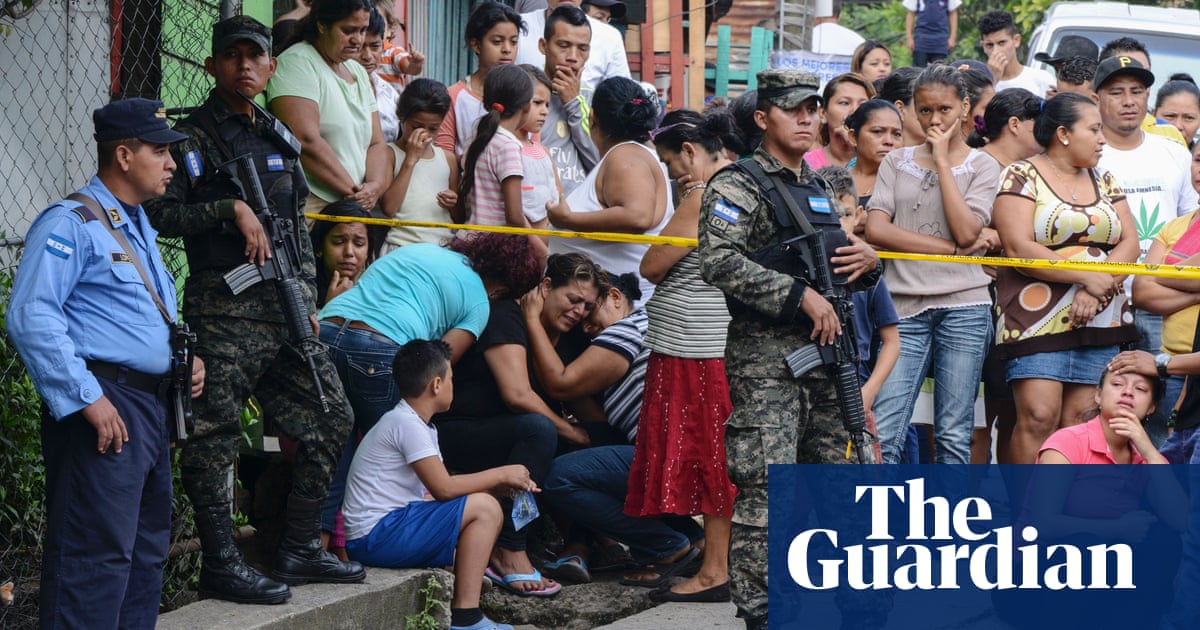
US’s Denial of Central America’s Crisis Will Backfire
While the caravans no longer march north, the Central American crisis is deepening away from our television screens.
(October 17, 2019) — Exactly one year ago, 160 men, women and children set off from San Pedro Sula in Honduras, in the first widely televised Central American human caravan. By the time the migrants reached the border of Guatemala and Mexico, their numbers had swelled to 7,000. The optics of their journey drastically changed US policy and suffocated political appetite to help the hundreds of thousands fleeing gang warfare, trafficking and natural disasters across the region.
I travelled the migrant route from El Salvador to Mexico last month, following in the footsteps of these families to better understand what drives so many to flee. What I learned on this journey should serve as a wake-up call to US policymakers about the crisis deepening in their own neighbourhood.
People Are Not Fleeing North for Economic Gain
Most of the women, men and children I met in El Salvador, Guatemala and Mexico undertook the desperate flight because they feared for their lives, not because they wanted American jobs or to live the “American dream”. The mothers and fathers I spoke to recounted stories similar in horror to the warzones I know from the Middle East and Africa.
In Chiapas, Mexico, I met a single mother who fled Honduras with her 11-year-old son after an armed gang threatened to take the child if she did not keep up extortion payments from the earnings of her small grocery store. On the run in Guatemala, she was forced into hard labour and abused by human traffickers. By the time we met in Mexico, she was beyond terrified, fearing for her life as both groups had assassins working for them across regional borders.
Sadly this mother’s story is not unique. Some 700,000 people fled their homes in northern Central America last year alone, mostly because of brutal violence. Over 10,000 people were killed over the same period. The region holds some of the worst violence statistics in the world.
The number of asylum applications from northern Central America is only comparable with countries at war, according to the UNHCR. Hondurans, Guatemalans, Salvadorans and Mexicans were among the top 10 nationalities claiming asylum last year, alongside people from Syria, South Sudan and Afghanistan.
Despite the haemorrhaging of human lives, the US continues to champion its war on asylum-seekers. Declaring El Salvador, Guatemala and Honduras “safe third countries”, it aims to cut off access to the US asylum system before families can even reach the border. This is in addition to building walls and cutting off aid to the countries from where people flee. These measures will only fuel hopelessness and drive the impulse to escape for safety in the north.

Denial of the Crisis Will Force More Families to Flee
Visiting Washington, I was stunned by the political apathy to engage in a crisis of this scale in the US’s own backyard. Politicians were more interested in discussing conflicts in far off lands where US influence is commensurably smaller. Contacts in Congress confided to me that there was presently little chance or interest in a change of policy.
The US denial of the societal collapse close to the southern border is similar to Europe’s shameful denial of the massive loss of lives in the Mediterranean. But at least European leaders recognise that investment and aid must increase within destitute communities if asylum doors are slammed shut.
US government attention is squarely focused on the shape and funding of its southern wall. Massive border control measures are expensive and inefficient. The youth I met in Honduras know of the race to erect as much barbed wire and wall as possible against them. But they are still hell-bent on trying time and again to reach the US, where they stand a chance of a safer life.
Central Americans Must Fix Their Own Problems
The solution to the crisis in Central America does not lie in the great escape north. It will depend on what the political and economic elites of these countries will ultimately do themselves.
Meeting El Salvador’s newly appointed Vice President Felix Ulloa, I was encouraged to hear that his government recognises its responsibility to re-establish law and order, and provide education and employment to areas in turmoil or controlled by armed groups. This requires long-term investment by domestic and international actors, led by the US.
In the Apopa neighbourhood outside San Salvador, my organisation, the Norwegian Refugee Council, worked with Central American partners and European funding to help reconcile communities. Education and livelihoods have been rebuilt. Hundreds of families have returned home. We can provide hope.
While the caravans no longer march north, the Central American crisis is deepening away from our television screens. This is the time that Americans must step up solidarity and support for their Central American neighbours, not turn away.
Jan Egeland is secretary-general of the Norwegian Refugee Council.
The views expressed in this article are the author’s own and do not necessarily reflect Al Jazeera‘s editorial stance.
Posted in accordance with Title 17, Section 107, US Code, for noncommercial, educational purposes.